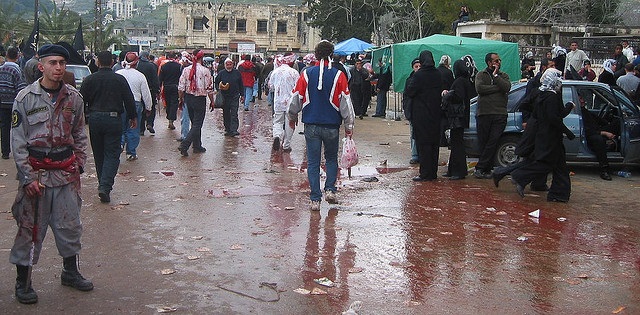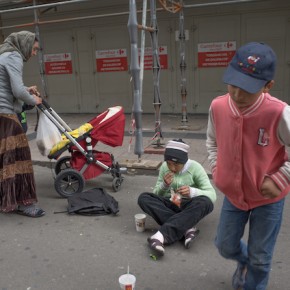Iranian revolutionary sociologist Ali Shariati took care to differentiate between martyrs and shaheed. Shariati believed that martyrs “die for the sake of god,” while shaheed are “always alive and present.” He argues in his work Jihad and Shahadat that shahadat (“bearing witness”) carries a “connotation of sacredness” which is the result of a “feeling of sacredness” that a political subject has “towards their school of thought.”
Citing Heidegger, Shariati argues that shaheed are the result of the “I” engaging in a relationship with an external value system, which are the principles that compose shahadat. Justice and egalitarianism are two examples of values that can be considered sacred by the political subject, meaning that the latter can imbue certain actions and behaviours with a sacred value. As a result, those actions become sacred in and of themselves, and affirm the values they are said to represent.
This has particularly strong consequences for the shaheed (“one who bears witness”) who submits to a process of self-annihilation. One does not simply die. As the political subject’s existence is negated, certain values are affirmed by their death. Shaheed voluntarily negate their own lives in order to affirm ideal qualities through the process of shahadat. They leave a residue that is manifest in the title of shaheed, which means that they have born witness to visions of an ideal social arrangement.
As a Shi’i Muslim, Shariati found an exemplar in Husayn, the grandson of the Prophet Muhammad whose sacrifice at Karbala forms the bulk of his analysis. He writes that “Husayn was that individual who negated himself with absolute sincerity, with the utmost magnificence within human power, for an absolute and sacred value.” Shariati goes further to argue that Husayn sacrificed (or negated) his existence in order to restate the previously vanishing ideal.
For Shariati, shahadat is a process of uncovering, by which a previously hidden and mystified revolutionary possibility is returned to the world. Karbala was a process by which Husayn dissipated into the act of resistance, and reaffirmed its existence. Given the reach of Shi’ism, and the importance of Husayn in Shariati’s own work, it is certainly a fair point.
Shariati distinguishes between two kinds of shaheed: one as exemplified by Husayn, and another as practiced by the early Muslim convert and warrior Hamza. Since Hamza died in the midst of battle, he became a shaheed through the act of jihad. Shariati argues to his readers that while jihad always carries the possibility of shahadat, his focus is on shahadat as a concerted attempt to return absent political qualities to the world. While this may occur through jihad, the two concepts do not necessarily imply one another. As Shariati quotes from Surat al-Baqarah:
To God belong both the East and the West. He guides whom He will to a straight path. Thus we have made you an Ommatan Wasatan (middle community) so that you may be shuhada (witnesses) over mankind, and the Apostle may be a shaheed over you. (2 : 142-3)
“A straight path” is essentially “the path of Allah,” which is embodied in a bundle of abstract qualities that are tied to concepts like egalitarianism, dignity, resistance, and social justice. Shariati doesn’t believe that jihad necessarily turns a community into shuhada that can facilitate their return when they have become absent, but leaves open the possibility that it can serve that role.
This is actually a problem in the work, since Shariati seems to be privileging the militarism of the external jihad, which discusses violence in defense of the community, rather than the internal jihad, which is given far more importance in Islamic praxis and involves a meditative process of embodying “the path of Allah.” It is worth wondering if jihad can possibly have the Dionysian effect that Shariati desires, rather than the mujahid simply being “a sincere warrior who, for the sake of defending his belief and community or spreading and glorifying his faith and community, rises so that he may break, devastate, and conquer the enemy who blocks or endangers his path; thus the difference between attack and defense is jihad.”
Still, his point remains valid. Husayn is described as a shaheed because “from the moment that Walid, the governor of Medina, asks him to swear allegiance [to Yazid] and he says, “NO!” – the negation by which he accepts his own death – Husayn is a shaheed, because shaheed in this sense is not necessarily the title of the one killed as such, but it is precisely the very witnessing aimed at negating an [innovative] affair.” Thus, although the question of how a mujahid can be a shaheed is open to debate, the point is that one must enter “the path of Allah” through concerted resistance.
It is in this sense that shaheed may uncover divine qualities that have become absent in the world, and in the process, anticipate its ethical renewal with shahadat as the guiding principle of an engaged political community. Shariati’s entire point is that religious praxis must stress dynamism and spiritual engagement:
It means that we, as a community, we must be the axis of time; that is to say, we must not be a group cowering in a corner of the Middle East or turning around ourselves, rather than becoming involved in crucial and vital issues, which form everything and make the present day of humanity and tomorrow’s history. We should not neglect this responsibility by engaging in self-indulgent repetition. We must be in the middle of the field.
The question going forward is whether this rhetoric inevitably opens the door to theocracy, or if Shariati can be used to open a larger inquiry into the role of martyrdom in social memory, and the communal qualities that are reinforced when shuhada are born. The qualities being remembered through shahadat are essentially repressed qualities that in Shariati’s view, have a revolutionary nature when they are unleashed. The shaheed simply brings them roaring back, with political consequences that reflect that sudden and dramatic shift.
Photograph courtesy of ashraf al-mansur. Published under a Creative Commons License.





